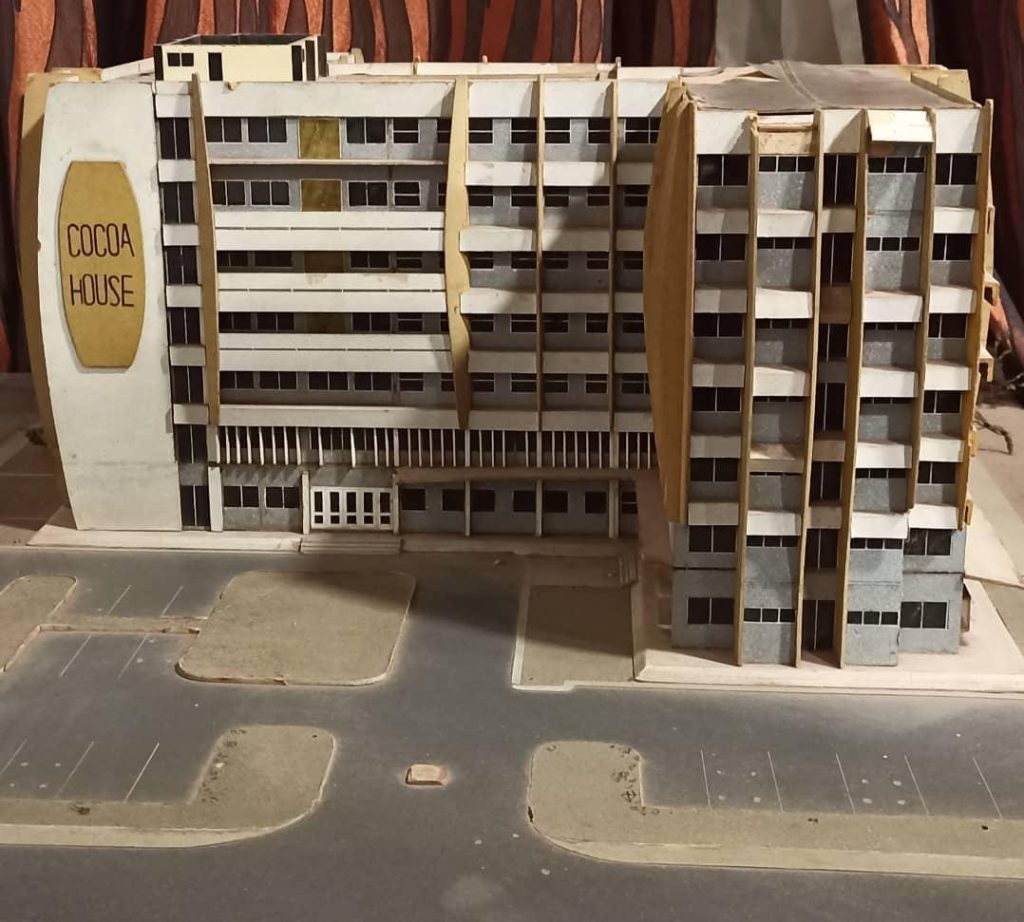A GNA Feature by Benjamin Akoto
Sunyani, March 28, GNA – Located in the heart of Sunyani, the Cocoa House, an imposing edifice of the Ghana Cocoa Board (COCOBOD), stands as a magnificent example of agri-architecture, seamlessly blending agricultural heritage with architectural innovation.
This iconic building pays homage to the cocoa industry, the mainstay and a cornerstone of the country’s economy, and serves as a symbol of the close relationship between agriculture and architecture in Sunyani.
The design of Cocoa House incorporates elements that reflect the agricultural roots of the region, with subtle nods to cocoa farming woven into its architectural features.
From the colour palette inspired by cocoa beans to the organic shapes reminiscent of cocoa pods, the building seamlessly integrates agricultural motifs into its modern design, creating a harmonious fusion of nature and structure.
The Cocoa House is on a 308-metre square land, boasting 135 office rooms and 111 washroom facilities, and two expansive car parks at the front and rear elevations.
History
The official groundbreaking ceremony for the building was performed on Monday, April 25, 1976, by the late General Ignatius Kutu Acheampong, the Chairman of the Supreme Military Council I (SMC I) and Head of State of Ghana. The contract was awarded to A-Lark Construction Firm, a United States of America architectural and building company.
That significant event coincided on the same day with the celebration of National Cocoa Day, of which the national durbar was held immediately after the groundbreaking ceremony at the Catering Rest House in Sunyani.
Unfortunately, the sixth-floor building project faced delays as it came to a halt on the fourth floor following General Acheampong’s overthrow in a bloodless palace coup, led by the late Lieutenant General Frederick William Kwasi Akuffo, on Wednesday, July 5, 1978.
In 1979, work on the project resumed under the leadership of Flight Lieutenant Jerry John Rawlings, then the leader and Chairman of the short-lived Armed Forces Revolutionary Council (AFRC), a military junta, but the original plan of eleven floors was reduced to six.
Despite those setbacks, the Sunyani Cocoa House was finally completed in 1996 and officially inaugurated by President Jerry John Rawlings, who was the leader of the then National Democratic Congress-led Government and Head of State under a democratic and constitutional dispensation of Ghana’s Fourth Republic.
Educational Benefits/Services to the Community/Region
Located at the centre of Sunyani, the Cocoa House’s strategic positioning not only improves accessibility but also strengthens the bond between urban living and agricultural heritage.
This establishment serves as a hub for both public and private businesses to thrive in a comfortable environment.
Besides its physical and imposing presence, the Cocoa House plays a crucial role in raising awareness and appreciation for the cocoa industry and agriculture generally in the country.

Through its design and functionality, the building acts as a driving force for business growth and educational advancement in the region.
This is because the elevator within the building for instance has become a valuable educational tool for numerous school children in the municipality and its surrounding areas, where pupils and students visit on excursion, providing them with knowledge on its operations and unique and enriching life experience.
Conclusion
In the midst of a rapidly evolving urban landscape, the Cocoa House stands as a shining example of agri-architecture, illustrating the potential for incorporating agricultural elements into contemporary building design.
Taking cues from the Cocoa House’s successful integration of agriculture and architecture, prospective physical infrastructural developers in Sunyani and beyond now had the opportunity to craft spaces that give cognizance to local traditions, and promote best and sustainable practices in the built industry to enrich the urban fabric.
The Cocoa House serves as a premier illustration of agri-architecture, encapsulating the area’s bountiful agricultural legacy and serving as a testament to the enduring relationship between agriculture and architecture.
It remains a beloved landmark that continues to inspire and captivate, showcasing the beauty and endless possibilities of merging agriculture with architectural ingenuity.
GNA